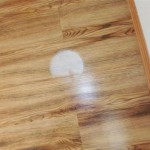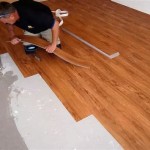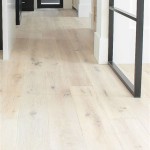Prefinished White Washed Wood Flooring: A Comprehensive Guide
Prefinished white washed wood flooring has surged in popularity, offering a versatile and aesthetically pleasing option for residential and commercial spaces. This flooring type combines the timeless appeal of hardwood with a modern, lightened aesthetic, creating an airy and inviting atmosphere. This article provides a comprehensive overview of prefinished white washed wood flooring, covering its characteristics, benefits, installation, maintenance, and considerations for choosing the right option.
White washing, traditionally a technique used to protect and brighten wood surfaces, has been adapted to create a distinctive flooring finish. The process involves applying a thin, diluted layer of white paint or stain to the wood, allowing the underlying grain pattern and natural textures to remain visible. This results in a subtle, textured appearance that enhances the character of the wood while providing a lighter, more contemporary look. Prefinishing refers to the fact that the white wash and protective topcoats are applied in a factory setting, resulting in a consistent finish and faster installation compared to unfinished wood flooring that requires on-site finishing.
The visual impact of prefinished white washed wood flooring is significant. It can brighten up a room, making it feel larger and more open. The light color reflects more light, reducing the need for artificial illumination during the day. Moreover, the neutral tone of white wash provides a versatile backdrop for a variety of interior design styles, from Scandinavian minimalism to coastal chic and farmhouse rustic.
Understanding the Manufacturing Process of Prefinished White Washed Wood Flooring
The production of prefinished white washed wood flooring involves several key steps. Initially, high-quality hardwood planks are selected based on species, grade, and grain pattern. Common wood species used include oak, maple, hickory, and ash, each offering unique characteristics in terms of hardness, durability, and visual appeal. Oak, particularly white oak, is a popular choice due to its prominent grain and durability, while maple provides a smoother, more uniform surface.
The wood planks are then milled to the desired dimensions, ensuring consistent thickness and width. After milling, the white wash finish is applied. This is typically done using a multi-step process. First, the wood is prepared by sanding to create a smooth, even surface. Then, the white wash stain or paint is applied, often diluted to allow the natural wood grain to show through. The application method can vary, including spraying, rolling, or brushing, depending on the desired level of coverage and texture.
Once the white wash is applied, the flooring undergoes a drying process to ensure proper adhesion and prevent future issues. This may involve air drying or using specialized drying ovens to control the moisture content of the wood. The final step is the application of a protective topcoat. These topcoats are typically made of polyurethane, acrylic, or UV-cured finishes, providing resistance to scratches, stains, and wear. Multiple coats are often applied to ensure maximum durability.
The prefinishing process offers several advantages. It ensures a consistent and even finish across all planks, which is difficult to achieve with on-site finishing. It also reduces the installation time and mess associated with sanding and finishing on site. Furthermore, prefinished flooring typically has a more durable finish due to the controlled application and curing process in a factory setting.
Benefits of Choosing Prefinished White Washed Wood Flooring
Opting for prefinished white washed wood flooring presents several compelling advantages. Firstly, the aesthetic appeal is undeniable. The light, airy look of white washed flooring can transform a space, creating a bright and inviting atmosphere. It complements a wide range of interior design styles, from modern and minimalist to rustic and traditional. The neutral color palette allows for greater flexibility in decorating and furnishing the room.
Secondly, prefinished flooring offers convenience during installation. Since the finishing process is completed in the factory, there is no need for sanding, staining, or applying topcoats on site. This significantly reduces the installation time and minimizes disruption to the home or business. It also eliminates the odors and dust associated with on-site finishing, making it a more environmentally friendly option.
Thirdly, the durability of prefinished white washed wood flooring is a significant benefit. The factory-applied finishes are typically more durable and resistant to scratches, stains, and wear than those applied on site. This is due to the controlled environment and specialized equipment used in the manufacturing process. The multiple layers of protective topcoat provide a robust barrier against daily wear and tear, ensuring the flooring maintains its beauty for years to come.
Fourthly, maintenance is relatively straightforward with prefinished white washed wood flooring. Regular sweeping or vacuuming is typically sufficient to remove dirt and debris. Occasional damp mopping with a pH-neutral cleaner is recommended to maintain the floor's cleanliness. Avoid using harsh chemicals or abrasive cleaners, which can damage the finish. The smooth, sealed surface of prefinished flooring is less prone to trapping dirt and stains, making it easier to keep clean.
Finally, prefinished white washed wood flooring can increase the value of a property. The combination of aesthetic appeal, durability, and convenience makes it an attractive feature for potential buyers. The timeless elegance of hardwood flooring, combined with the modern update of a white wash finish, can enhance the overall appeal and marketability of a home or business.
Key Considerations When Selecting Prefinished White Washed Wood Flooring
Choosing the right prefinished white washed wood flooring requires careful consideration of several factors to ensure it meets the specific needs and preferences of the space. The first key consideration is the wood species. As mentioned earlier, different wood species offer unique characteristics in terms of hardness, durability, and visual appeal. Oak is a popular choice for its durability and prominent grain, while maple provides a smoother, more uniform surface. Hickory is known for its hardness and distinct grain patterns, while ash offers a light color and good shock resistance. The choice of wood species should be based on the intended use of the space, the desired aesthetic, and the budget.
The grade of the wood is another important factor to consider. Wood flooring is typically graded based on the number of knots, color variations, and other natural characteristics present in the wood. Higher grades have fewer imperfections and a more consistent appearance, while lower grades have more knots and color variations, giving them a more rustic look. The choice of grade depends on the desired aesthetic and the level of formality of the space.
The type of finish is also a critical consideration. The durability and appearance of the flooring depend heavily on the type of finish used. Polyurethane finishes are known for their durability and resistance to scratches and stains. Acrylic finishes offer good clarity and water resistance. UV-cured finishes are extremely durable and resistant to wear. The choice of finish should be based on the expected level of traffic and the desired level of maintenance.
The width and thickness of the planks should also be considered. Wider planks can create a more modern and spacious look, while narrower planks offer a more traditional feel. The thickness of the planks affects their stability and durability. Thicker planks are generally more resistant to warping and cupping, especially in areas with high humidity.
Finally, it is essential to consider the overall design and aesthetic of the space. The color and tone of the white wash finish should complement the existing color scheme and furniture. The texture and grain pattern of the wood should also align with the overall design style. Consider the lighting in the room and how it will affect the appearance of the flooring. Natural light can enhance the beauty of white washed wood, while artificial light can alter its tone.
In conclusion, prefinished white washed wood flooring offers a combination of aesthetic appeal, durability, and convenience, making it a popular choice for residential and commercial spaces. By carefully considering the factors discussed above, homeowners and business owners can select the right option to enhance the beauty and value of their properties. The enduring charm and versatility of white washed wood ensure its continued popularity in the world of interior design.

New Shades Of White The Transformation Whitewashed Hardwood Flooring

Trendy Whitewashed Hardwood Floors

White Washed Hardwood Flooring Ideas

Whitewash Flooring The Many Shades Of White Elmwood Reclaimed Timber

Whitewash Flooring The Many Shades Of White Elmwood Reclaimed Timber

Quick Step Reclaime White Wash Oak Planks Hurst Hardwoods

They Nailed It Or Maybe Stained Addison S Wonderland

European Oak French Connection Vintage White Chevron Oil

Are Whitewashed Floors Coming Back

3 White Wash Style Floors For A Interior Carlisle Wide Plank
Related Posts








